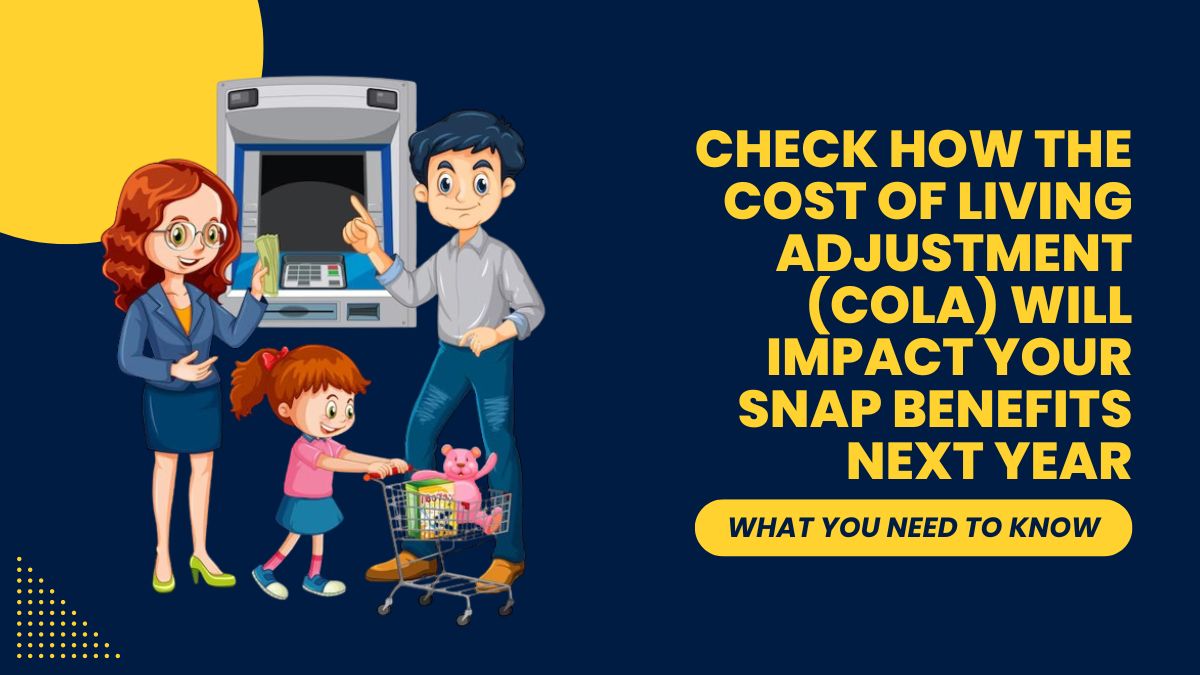The cost of living adjustment (COLA) is a vital mechanism that ensures government assistance programs, like the Supplemental Nutrition Assistance Program (SNAP), keep pace with inflation. While many are familiar with how COLA affects Social Security retirement benefits, it’s equally crucial to recognize its impact on SNAP, which helps millions of Americans afford food.
Contents
- 1 How COLA Works
- 2 Key Adjustments
- 3 Role of SNAP
- 4 Preparing for the Next COLA
- 5 Why These Adjustments Matter
- 5.1 Social Security Maximum Benefit for Full Retirement Age Workers – Changes Following the 2025 COLA Increase
- 5.2 FAQs
- 5.3 When do SNAP benefits adjust for COLA?
- 5.4 How is SNAP eligibility determined?
- 5.5 How does COLA affect SNAP benefits?
- 5.6 What’s the 2025 COLA impact on SNAP?
- 5.7 Why is SNAP important for seniors?
How COLA Works
Unlike the annual COLA adjustment for retirement benefits announced by the Social Security Administration (SSA) in October, the SNAP adjustment is synchronized with the start of the federal fiscal year, which begins on October 1. This timing means that while retirees wait until the following year to see their benefit increases, SNAP beneficiaries see changes almost immediately within the current year.
The United States Department of Agriculture (USDA), which administers SNAP, reviews economic data annually to adjust maximum allocations, deductions, and income eligibility standards in line with the cost of living. These adjustments ensure that SNAP benefits continue to provide meaningful assistance despite rising prices, helping families maintain a basic standard of living.
Key Adjustments
Every year, the USDA adjusts several key elements of the SNAP program:
- Maximum Allocations: The maximum amount of benefits a household can receive is adjusted to reflect increased food costs.
- Deductions: Allowable deductions, which reduce gross income to calculate net income, are revised to ensure that beneficiaries are not unfairly penalized by inflation.
- Income Eligibility Standards: These standards determine who qualifies for SNAP based on household income. Gross monthly income limits are set at 130% of the poverty level, while net income limits, after deductions, are set at 100%.
These adjustments take effect on October 1, the start of the federal fiscal year. For example, if the USDA announces a new COLA in early August, the changes will apply to SNAP benefits starting October 1. This timing ensures that adjustments are relevant and timely, reflecting the most current economic conditions.
Role of SNAP
SNAP benefits are particularly important for seniors, many of whom rely on both SNAP and Social Security retirement benefits to make ends meet. With nearly 5 million seniors receiving both types of assistance, the COLA adjustments for SNAP are crucial. These adjustments help protect the purchasing power of seniors living on fixed incomes, ensuring they can still afford basic necessities like food.
The increase in maximum allocations, for instance, means that as food prices rise, seniors and other beneficiaries will not see a reduction in the quantity or quality of food they can purchase. This is especially important given that food prices often rise faster than other expenses.
Preparing for the Next COLA
As the USDA prepares to announce the 2025 COLA, SNAP beneficiaries should be aware of the potential changes to their benefits. Staying informed through official channels, such as the USDA website or local assistance offices, can help beneficiaries understand how these adjustments will impact them. It’s also important to review income and deductions regularly to ensure they reflect current circumstances, as this will affect the amount of SNAP benefits received.
Beneficiaries can expect increases in maximum allocations for different household sizes and geographical areas, including the 48 contiguous states, Alaska, Guam, and the U.S. Virgin Islands. For example, last year’s maximum allocation for a family of four in the 48 states and DC was $973, a figure expected to rise with the new COLA.
Why These Adjustments Matter
The COLA process is more than just a bureaucratic update; it’s a lifeline for millions of Americans. By adjusting SNAP benefits to keep pace with inflation, the USDA ensures that the program continues to fulfill its mission of helping low-income families afford food. Without these adjustments, rising living costs could quickly erode the purchasing power of SNAP benefits, making it harder for families to cover their basic needs.
For seniors and others who rely on both Social Security and SNAP, these adjustments are particularly critical. They help ensure that even as prices rise, beneficiaries can maintain a basic standard of living without having to sacrifice essentials like food.
As the next round of adjustments approaches, it’s important for beneficiaries to stay informed and take steps to ensure they’re receiving the correct amount of assistance. By doing so, they can better manage their budgets and ensure they’re prepared for any changes.
FAQs
When do SNAP benefits adjust for COLA?
SNAP benefits adjust every October 1 with the start of the federal fiscal year.
How is SNAP eligibility determined?
Eligibility is based on income limits set at 130% of the poverty level.
How does COLA affect SNAP benefits?
COLA adjusts SNAP benefits to reflect the rising cost of living.
What’s the 2025 COLA impact on SNAP?
Expect an increase in benefits to match inflation and food costs.
Why is SNAP important for seniors?
It helps seniors on fixed incomes afford food as prices rise.













